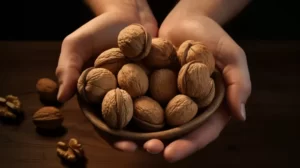Superfoods are all the rage these days – think quinoa, kale, and goji berries – and for good reason. They’re packed with high nutritional contents that can help reduce the risks of chronic diseases, promote weight loss, stave off depression, and boost energy levels. As health-conscious consumers continue to look out for the next potent, beneficial superfood, let’s take a look at seven lesser-known superfoods you may not have heard of, but should definitely try:
Moringa: More nutritious than kale
Moringa is a tree native to parts of Africa and Asia. Its leaves are said to be even more nutritious than kale and are brimming with vitamins A and C, calcium, iron, potassium, and protein. Moringa is a powerhouse medicinal herb that can improve asthma, arthritis, diabetes, thyroid disorders, and blood pressure. It’s becoming more available in specialty food stores and herb shops.
Freekeh: The ancient Arabian dish
Freekeh is an ancient Arabian dish made from green wheat that has undergone a roasting process. It is high in calcium, iron, and fiber. Although it’s not gluten-free, its low glycemic index can be helpful in managing diabetes.
Sideritis: Greece’s healing herb
Sideritis, grown in mountainous areas of Greece, is an herb often used in herbal teas. Sometimes called ironwort, mountain tea, or shepherd’s tea, it is known for its abilities to heal wounds, aid digestion, strengthen the immune system, and suppress allergies.
Baobab: The massive African tree
Baobab, a massive tree native to Africa, is prized for its medicinal and nutritive value, just like the moringa. The fruit is about the size of a small coconut and has a velvety shell, with the tart pulp inside comparable in taste to a grapefruit. Baobab is loaded with antioxidants and vitamin C and is commonly used to treat asthma and inflammation. It is also often used in skin and hair care products, as it is rich in essential fatty acids.
Pitaya: Central America’s vibrant fruit
Pitaya, native to Central America and sometimes called dragon fruit, is a bright pink fruit loaded with vitamin B, fiber, and magnesium. It is a rich source of antioxidants and is thought to help slow the aging process by fighting free radicals found in our bodies. Pitaya has also been used to lower cholesterol and promote healthy digestion.
Amla: The sacred Indian gooseberry
Amla, also known as Indian gooseberry, is a fruit found on trees considered sacred in India. Although it’s a bit sour, it’s highly nourishing. Amla is used in many hair care products because it enriches hair growth and pigmentation. It has also been linked to improved eyesight and is used to treat menstrual cramps and regulate insulin production.
Citicoline: Organ meat as a superfood
You may be surprised to find organ meats such as liver, heart, and brain on this list, but they were staples of the hunter-gatherer diet due to their high nutritional content. Citicoline is one such superfood, typically found in the liver or brain. It helps with memory retention, among other brain functions, and has been known to improve visual function in patients with glaucoma.
As these superfoods become more popular and make their way onto grocery store shelves, it’s important to remember that packaged often means processed. Be sure to check the labels to make sure you’re getting the most out of these amazing and nutritious foods.



